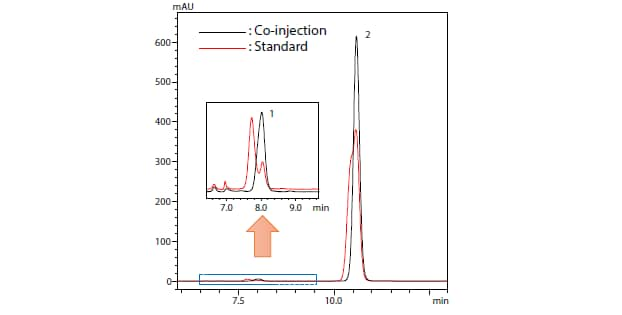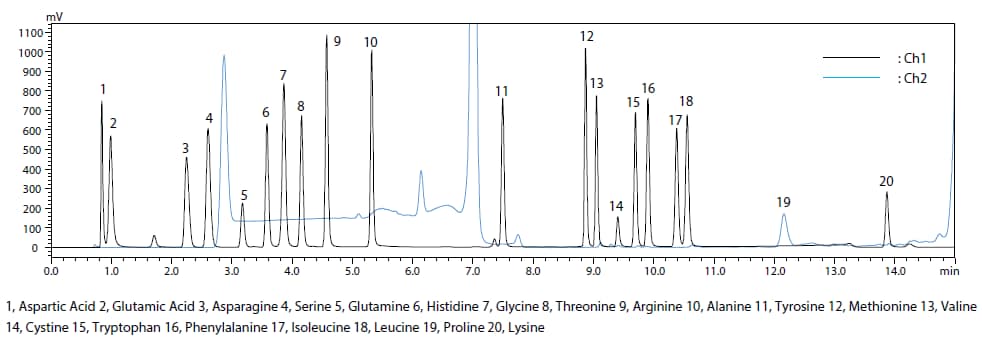Mobile Phase Monitor (MPM-40)
Nexera Series Co-Injection Feature
When samples are analyzed by HPLC it is important that the composition of the sample diluent match the initial conditions of the HPLC gradient program. A mismatch can cause poor peak shape and inconsistent retention times, especially of early eluting peaks. This can pose a problem for purchased standards which are often dissolved in 100% organic diluent or for samples that have poor solubility in aqueous solvents.
Shimadzu’s new Co-Injection function for the Nexera (U)HPLC allows the autosampler to aspirate additional solutions with the sample into the loop before injection. By aspirating a weaker solvent, like water, with the standard or sample to reduce the effects of diluent mismatch. This can greatly improve peak shape, especially with early eluting peaks during gradient analysis.

Figure 1. Injection of sample with and without Co-Injection feature.
The Co-Injection feature has uses beyond the correction of peak shape. It can be used to perform an in-needle derivatization of compounds like amino acids and non-chromophoric compounds. These analytes are traditionally derivatized by the analyst before introduction to the HPLC which is time consuming and can lead to error. Use of the Nexera (U)HPLC reduces the chance for this error and can be performed unattended.

Figure 2. Analysis of 20 Amino Acids by in-needle derivatization using the Co-Injection function.



